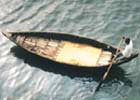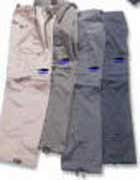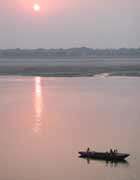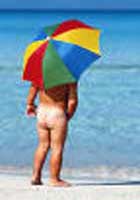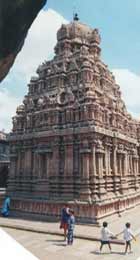The subcontinent has eight climatic zones all of which only have the monsoon rains in common. But even the monsoon comes to different parts of the country at different times.
The Indian year passes through four seasons. Winter lasts from December to February, and summer from March to May. The rainy season of Southwest monsoon is from June to September. The post monsoon season, which is North East monsoon in South India, is in October and November.
There is a heavy rainfall in north eastern region, the western slopes of the Western Ghats and parts of the Himalayas during the year. On the other hands, there is hardly any rainfall in Rajasthan, Kutch, and Laddakh. There is medium or average rainfall in other parts of the country.
India experiences hot tropical weather with variations from region to region. Coolest weather lasts from December to February, with cool, fresh mornings and evenings and dry, sunny days. Really hot weather, when it is dry, dusty and unpleasant, is between March and May. Monsoon rains occur in most regions in summer between June and September.
Western Himalayas:
Srinagar is best from March to October; July to August can be
unpleasant; cold and damp in winter. Simla is higher and therefore
colder in winter. Places like Pahalgam, Gulmarg and Manali
are usually under several feet of snow (December to March) and
temperatures in Ladakh can be extremely cold. The road to Leh is open
from June to October.Required clothing: Light- to medium weights are advised from March to October, with warmer wear for winter. Weather can change rapidly in the mountains and therefore it is important to be suitably equipped. Waterproofing is advisable.
Northern Plains
Extreme climate, warm inland from April to mid-June
falling to almost freezing at night in winter, between November and
February. Summers are hot with monsoons between June and September.Required clothing: Lightweight cottons and linens in summer with warmer clothes in winter and on cooler evenings. Waterproofing is essential during monsoons.
Central India
Madhya Pradesh State escapes the very worst of the hot
season, but monsoons are heavy between July and September.
Temperatures fall at night in winter.Required clothing: Lightweights are worn most of the year with warmer clothes during evenings, particularly in winter. Waterproofed clothing is advised during monsoon rains.
Western India
November to February is most comfortable, although
evenings can be fairly cold. Summers can be extremely hot with monsoon
rainfall between mid-June and mid-September.Required clothing: Lightweight cottons and linens are worn most of the year with warmer clothes for cooler winters, and waterproofing is essential during the monsoon.
Southwest
The most pleasant weather is from November to March.
Monsoon rains fall between late April and July. Summer temperatures
are not as high as Northern India, although humidity is extreme. There
are cooling breezes on the coast. Inland, Mysore and Bijapur have
pleasant climates with relatively low rainfall.Required clothing: Lightweights are worn all year with warmer clothes for cooler evenings, particularly in winter. Waterproofing is advised during the monsoon.
Southeast
Tamil Nadu experiences a northeast monsoon between October
and December and temperatures and humidity are high all year. Hills
can be cold in winter. Hyderabad is hot, but less humid in summer and
much cooler in winter.Required clothing: Lightweight cottons and linens. Waterproofing is necessary during the monsoon. Warmer clothes are worn in the winter, particularly in the hills.
Northeast
March to June and September to November are the driest and
most pleasant periods. The rest of the year has extremely heavy
monsoon rainfall and it is recommended that the area is avoided.Required clothing: Lightweight cottons and linens. Waterproofing is advisable throughout the year and essential in monsoons, usually from mid-June to mid-October. Warmer clothes are useful for cooler evenings.
For extra information visit the following sites:
- Climate in India / Weather in India
- Travelling needs
- Tips for travelling in India - Ministry of Tourism
Temperature of major Indian cities




